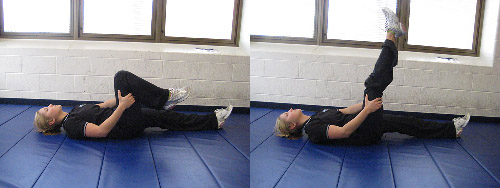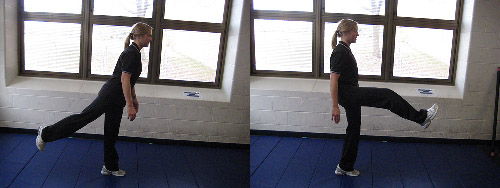Top 4 Ways To Stretch
This blog was originally posted on the Exercise Biology website. It gives great insight as to what kinds of stretches you should be doing before and after your workouts.
With all the mixed information out there it’s hard to know what kind of stretching to do and when to do it. There are 5 different types of stretches to consider when the time arrises: Static, Active, Dynamic and PNF Stretching.
What is the difference between Static, Active, Dynamic and PNF stretching? It’s time to learn which type of stretching is better and how to perform them.
Static Stretching
As the name suggests, Static Stretching involves holding a muscle at the stretched position for 20 -30 seconds. No additional benefit has been shown to extend the stretch for more than 30 seconds.
Static stretching is best done after your workouts. It has shown to decrease strength and power if done immediately before weight training. The stretch is held when you feel a nice stretch (or slight discomfort) until you feel the muscle relaxing.
Active Stretching
Active Stretching involves stretching the muscle actively. In other words, you are holding the stretched position with the opposing muscle group. You muscles are playing an active role in holding the stretch position.
In this picture example, the hamstrings are stretched by using your quadriceps (opposing muscle). You cannot hold this position for more than 5-10 seconds. She is only using her hands for support and is not holding the leg up with her hands.
Dynamic Stretching
Dynamic stretching is similar to active stretching. However, in dynamic stretching you don’t hold the stretch. You are always moving or dynamic.
Dynamic stretching is not the best for improving flexibility. But it is good way to warm up for your sport and has shown to improve performance.
PNF Stretching
Proprioceptive Neuromuscular Facilitation (PNF) is said to use receptors to improve the neuromuscular (related to nerves & muscles) response of the body. The flexibility gained can be maintained by doing PNF stretches of minimum one repetition for at least 2 times a week. There are different ways to do PNF: Contract relax, Contract-Hold relax and so on.
Usually, PNF is performed with the help of a partner. But you can do it on your own with a towel for resistance.
To perform a hamstring PNF stretch, stretch till you feel a slight discomfort, contract the hamstring isometrically (without moving) for 3-5 sec, relax the muscle and slowly deepen the stretch using your quadriceps (opposing muscle). Repeat the cycle 3-4 times. Try it, it just sounds complicated.
PNF yields greatest gains and is the fastest way known to improve the range of motion or flexibility.
Conclusion
- Use static or PNF stretching if the muscle is really tight. Better to avoid static stretching before your workouts.
- Use dynamic stretching as warm up rather than static stretching.
- Maintain the arch in your back and keep the non-stretched leg straight and toes pointed upright.
- Always remember to breathe while streching. Stretching shouldn’t be painful.
For the full blog post go to Exercise Biology The Science of Exercise website.



